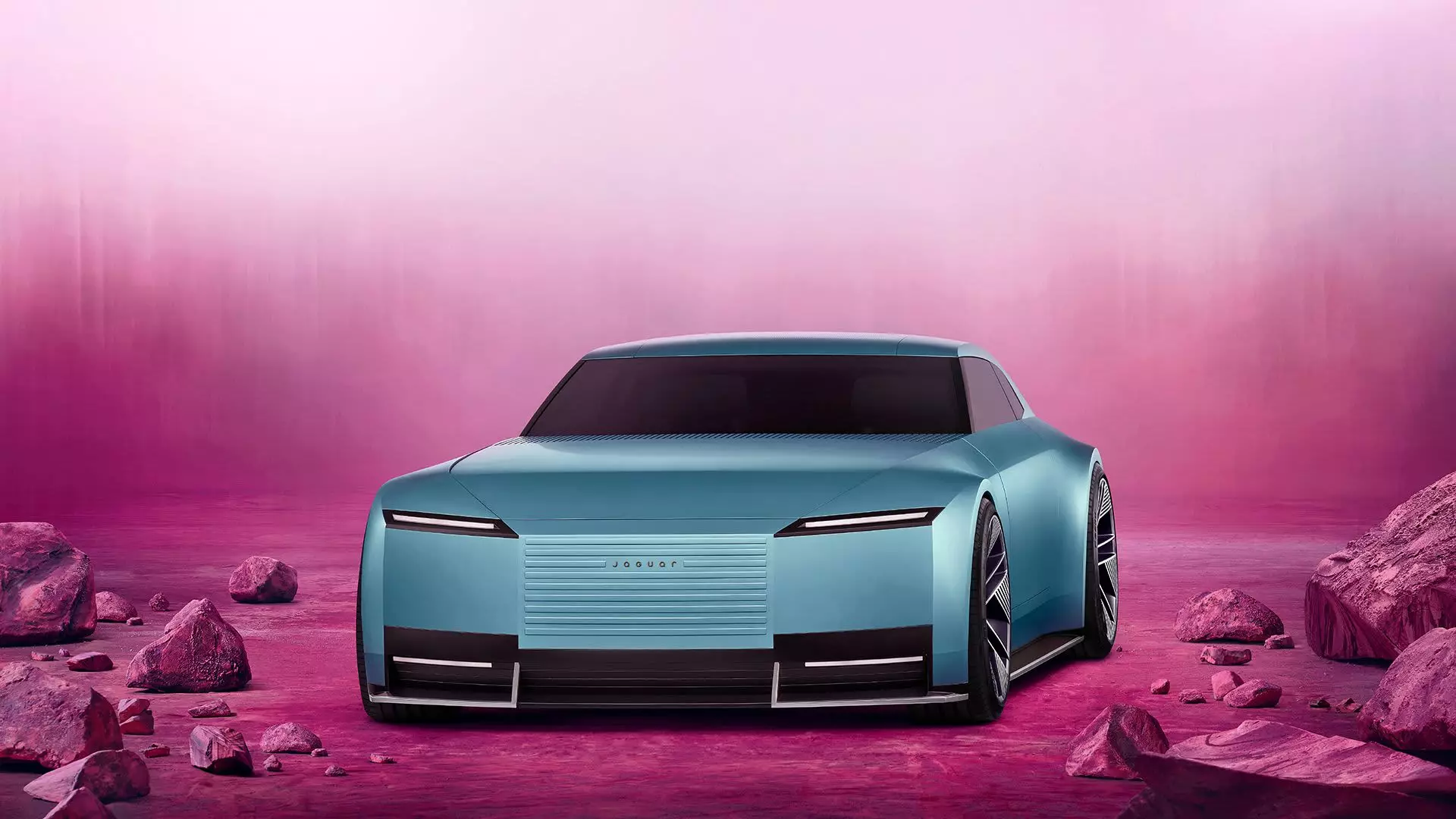In a significant move towards a future dominated by electric vehicles, British luxury car manufacturer Jaguar unveiled its striking new concept car, the Type 00, to the public. This all-electric design, introduced during a high-profile event, marks a pivotal shift in Jaguar’s aesthetic, departing from its classic sporty silhouettes in favor of a more unconventional and minimalistic approach. The Type 00, pronounced “Type Zero Zero,” showcases a boxy structure adorned with sleek lighting elements and oversized wheels, which certainly influence the visual landscape of modern automaking. This bold design statement reflects not only a fresh perspective but also indicates the company’s readiness to engage with a new generation of car enthusiasts and eco-conscious consumers.
Automakers frequently employ concept vehicles as tools to gauge consumer interest and map future directions for vehicle designs. Unlike typical production models, concept cars are not intended for retail sale; instead, they serve as a precursor to potential production models. In Jaguar’s case, the Type 00 is expected to set the stage for various forthcoming electric vehicles, including an anticipated four-door GT model expected to resemble this conceptual design, slated for debut next year. With Jaguar ambitiously projecting an impressive range of up to 430 miles on a single charge and the ability to gain 200 miles of range in just 15 minutes through rapid charging, it is clear that they aim to challenge the current benchmarks of electric vehicle performance.
Waves in Marketing Strategy and Race Against Time
The unveiling of the Type 00 follows an offbeat marketing campaign described as a part of the company’s “Copy Nothing” rebranding initiative. This effort has been complemented by a visually arresting advertisement featuring diverse models posed in vivid surroundings, aimed at refreshing Jaguar’s narrative and broadening its customer base. The ad received mixed reviews, however, facing criticism for its lack of direct automotive imagery—a divergence from traditional advertising strategies that typically showcase the vehicles. Moreover, the reaction from the public included backlash against the brand’s redesign choices, particularly the decision to eliminate the iconic Jaguar logo that has symbolized the brand since the mid-20th century.
Jaguar’s approach to its rebranding has sparked heated debates online, with some critics dubbing the efforts as “woke” and accusing the company of straying from its historical identity. The company bravely defended its strategy, characterizing the rebranding as a necessary evolution in a rapidly changing automotive landscape. Managing director Rawdon Glover articulated the need to transform and reposition the Jaguar brand at a different price point, emphasizing the importance of breaking free from conventional automotive stereotypes. This introspective vision positions Jaguar uniquely within a fiercely competitive market that is gravitating towards sustainability.
The Broader Context of Electrification in the Auto Industry
Jaguar is not alone in its endeavor to switch to an all-electric format; numerous automakers have announced plans for a similar transition. However, the path to electrification has proven more complex than anticipated, with many manufacturers tempering their ambitions in light of slower-than-expected consumer adoption rates. Jaguar’s recent decision to suspend all new car sales in the U.K. while preparing for an exclusive electric future by 2026 illustrates the urgency of adapting to industry trends. Competitively positioning themselves as a brand committed to sustainability, they are one of the many companies responding to the growing demand for cleaner transportation options.
As Jaguar embarks on this ambitious journey, the Type 00 stands as a potent symbol of the brand’s evolution. While the road ahead is fraught with challenges—from market pressures to public perception—the company’s bold steps indicate a commitment to redefining luxury in the electric age. As consumers veer towards sustainability without compromising style and performance, Jaguar’s daring shift offers a glimpse into the future of automotive design and the potential for renewed legacy in the electric landscape. The buzz surrounding the Type 00 and the company’s broader rebranding efforts reflects both the transformative spirit of the automotive industry and the consumer appetite for innovation.

